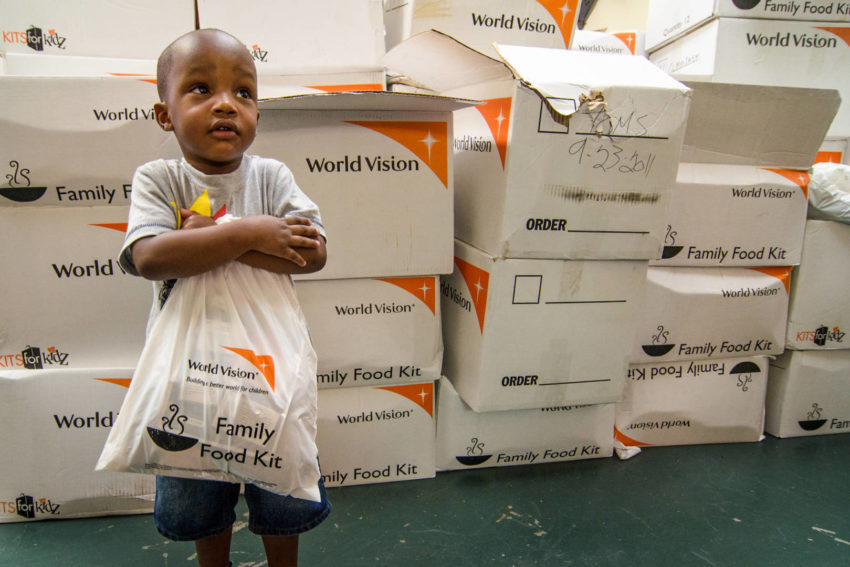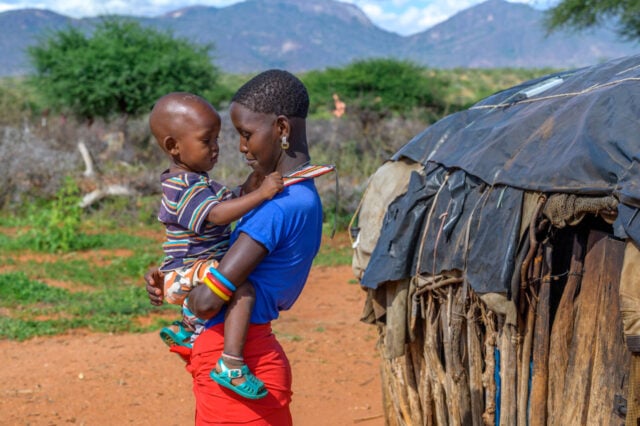As we celebrate our nation’s freedom tomorrow, many in America remain bound by hunger — including almost 16 million children.
Today, World Vision writer John Iwasaki describes how our U.S. Programs are working to help bring freedom from hunger to families across our nation.
Some children have a hunger to learn. Some might just be hungry.
Or both, as in the case of a boy whose mom recently sought to enroll him in the summer school program at Tyee Park Elementary School in Lakewood, Washington.
Told that her son was doing fine academically, the mom persisted, revealing a deeper need.
“She said, ‘We really don’t have the means … and at least he’ll be getting lunch there,’” says Jennifer Rios Lopez, family involvement coordinator at Tyee Park.
The boy is one of the 21.5 million children in the United States who received free or reduced-price meals through the National School Lunch Program in 2013, breaking the previous year’s record.
About 2.4 million of those children also eat in the Summer Food Service Program, a number that would be higher if more eligible schools participated.
More than 97% of the 450 students at Tyee Park qualify for free school meals, with about 2% eligible for reduced-price meals, says Rios Lopez. Many children have parents who are low-ranking military members or migrant workers.
World Vision takes turns with two other nonprofit organizations, Northwest Harvest and Caring for Kids, to send food home with the 60 children most in need at Tyee Park so they can eat over the weekend.
Once a month during the school year, World Vision provides Family Food Kits to those children. Each kit provides enough ingredients to make four meals, like black beans and rice, which will feed a family of five for a day.
“A mom would tell me, ‘My husband lost his job. I’m only working part-time. We’re about to run out of food stamps,’” Rios Lopez says. “The week she got the Family Food Kits, she knew they would all be able to eat and that it would be nutritious meals.”
In another family, grandparents are raising the children.
“Grandma was so happy,” Rios Lopez says. “She told me, ‘This [food kit] is a godsend.’”
Without getting help from World Vision and the other two organizations, many of Tyee Park’s students would miss one or two meals on the weekends, Rios Lopez says. Food banks typically limit the hungry to one visit or so per month, and parents working long hours often can’t get there before they close anyway.
An exception is the food bank operated by Help Northwest, which is open 12 hours a day, seven days a week.
“We saw a need and thought that’s what God would have us do,” says Jim Brass, who started a multi-service nonprofit organization eight years ago in Auburn, Washington. “It’s an interesting setup: People come by to pick up food. People come by to drop off food. It cycles all day long.”
The constant among those needing food?
“They are living on a very, very tight budget,” Brass says. “One little thing goes wrong, like a utility bill higher than expected or a flat tire, and that’s it. The food budget’s shot. That’s the variable, because they have to pay rent, have to pay for power.”
Nearly 50 million Americans lived in food-insecure households in 2012, according to the U.S. Department of Agriculture. That means that they had difficulty at some time during the year providing enough food for all family members because of a lack of resources.
The food insecure includes 15.9 million children.
Brass knows the local youth and families who are hungry. “I see them every day,” he says. Other regulars are the homeless, whom Brass gives Family Food Kits because the meals are easy for them to prepare.
World Vision plans to distribute 40,000 Family Food Kits across the U.S. in 2014, enough to provide 600,000 meals.
Most of the kits are passed out to families in need through World Vision’s field sites in the U.S., such as moms and moms-to-be attending the annual Community Baby Shower at Grace Community Church in Auburn.
A mom named Martha attended the shower two years ago when the youngest of her three children was three weeks old and her husband was out of a job.
Her family was getting by, she says, but without help from the food bank or elsewhere, “we would go hungry.”
For Rios Lopez, such stories are unfortunately common.
“People don’t see it, but many children go without, right here in our neighborhood and country,” she says. “Unless people are here and see what I’m seeing, they don’t see the difference [Family Food Kits] make.”
Right here in the United States, 1 in 5 children lives in poverty. Join us today in helping to restore hope to American families struggling with hunger. Send Family Food Kits, which include nutritious meals like oatmeal, potato soup, pasta, and a bean and rice casserole!



Comments